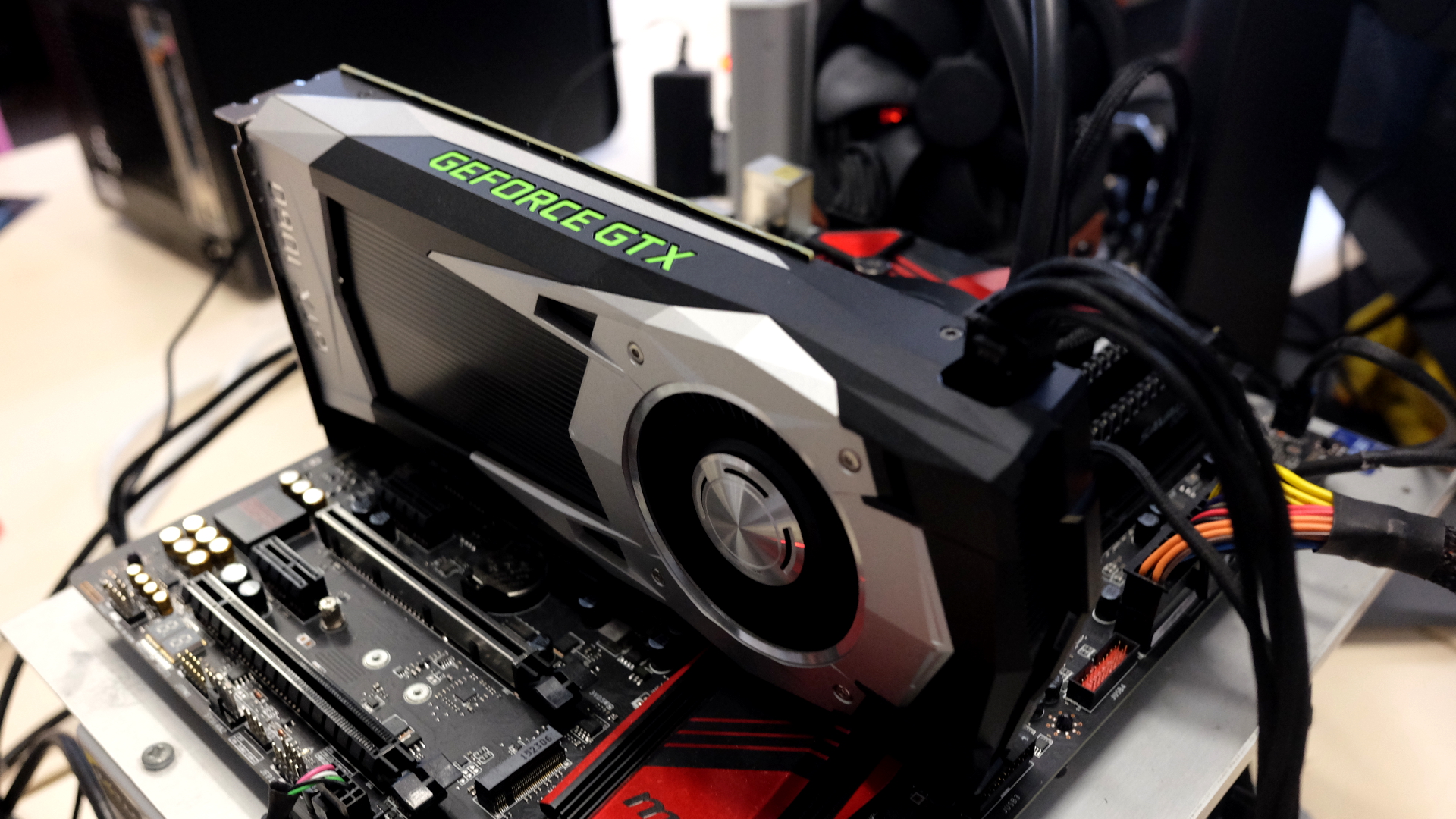TechRadar Verdict
The jump from Maxwell to Pascal is exceptional. The GTX 1080 sealed the high end with an almost 50% improvement over last generation's equivalent, and the same can be said for the GTX 1060. It's cool, quiet, and fantastically well rounded for a card at this price point.
Pros
- +
Brilliant 1080p performance
- +
Solid 1440p performance
- +
Great overclocker
- +
GTX 980-matching
Cons
- -
No SLI compatibility
- -
Founder's Edition price
Why you can trust TechRadar
The Nvidia GeForce GTX 1060 marked a great time for PC enthusiasts. For example, in 2016, we saw the largest advancement in manufacturing processes and performance increases since the start of Intel’s 32nm Nehalem processor line back in 2009. And, that’s happening again in 2019 with the advent of 7nm for Nvidia and AMD.
Either way, no matter how you look at it, Nvidia and AMD’s product stacks start at the midrange. Sure, the flagships like the Nvidia GeForce RTX 2080 Ti get all the press, but the mid-range wins the war.
Next Nvidia Shield Tablet could be a 2-in-1
Nvidia expands GTX 16-Series with new mobile graphics and desktop GTX 1650
So, we’re going to take a look back at the Nvidia GeForce GTX 1060 6GB. Throughout 2016, we saw the Z170 chipset, Skylake Broadwell-E, the best graphics cards of Pascal, like the GTX 1080 and 1070, all of this was capped off when Nvidia launched the GTX 1060 6GB – the answer to AMD’s mid-range domination, led by the Radeon RX 480.
You see back when the Nvidia GeForce GTX 1060 launched, the AMD Radeon RX 480 was the star of the show. It was aggressively priced and sat comfortably between the Nvidia GeForce GTX 970 and GTX 980 in terms of performance. But, was the RX 480 priced aggressively enough to hold back the tidal wave that was the GTX 1060 6GB?

Pascal power
So then, what do we know about this new mid-range Titan? Well, it's still based off of Pascal's 16nm FinFET manufacturing process, albeit on the GP106 processor as opposed to the GTX 1080 and 1070's GP104.
It comes in either 6GB or 3GB variants, at the standard 8GB/s of bandwidth on a 192-bit bus, features an impressive 1,280 CUDA cores, 80 Texture Units and 48 ROPs. Couple that with an increase of 1.46 billion transistors, a 120 watt TDP and a base spec base clock (before GPU boost gets its hands on it) of 1708 MHz and we're on to a winner.
Hold on a moment...
It’s not all sunshine and roses with the GTX 1060, though. There’s one standout issue, and it’s a big deal: SLI. While opening up this gorgeous Nvidia packaging, one thing was immediately noticeable – the lack of the usual SLI fingers on the top of the card.
Sign up for breaking news, reviews, opinion, top tech deals, and more.
Now, while at this price point, the lack of SLI isn’t that big of a deal – anyone looking to boost their GPU performance a couple years down the line will be affected by the lack of an SLI bridge. This limits you to DX12 titles supported by both Microsoft and the game developers via nifty tech called MDA mode or LDA explicit – and we wouldn’t count on this being a reliable method of increased performance.

This actually then brings up quite the conundrum when it comes to how exactly you take your upgrade path. Historically, we've always suggested (if you're buying long term for now) that you should always opt for a more powerful GPU rather than two lower cost cards. SLI is great when it works, but it's exactly that - it has to work - and with a lack of SLI profiles for games on launch, it's not always a compelling argument to grab two unless you're talking about a top-tier PC gaming monster rig.
However, if you're looking to pick up an additional card later down the line when prices drop and a new generation of cards pop, it's just not going to be possible anymore. The alternative to this conundrum is to opt for the more higher-end GTX 1070, which retains those SLI fingers if that's your jam.
Or, optionally you could go for AMD's RX 480, which comes at a slightly cheaper price point, and with performance set succinctly between the GTX 980 and 970.

Zak is one of TechRadar's multi-faceted freelance tech journalists. He's written for an absolute plethora of tech publications over the years and has worked for Techradar on and off since 2015. Most famously, Zak led Maximum PC as its Editor-in-Chief from 2020 through to the end of 2021, having worked his way up from Staff Writer. Zak currently writes for Maximum PC, TechRadar, PCGamesN, and Trusted Reviews. He also had a stint working as Corsair's Public Relations Specialist in the UK, which has given him a particularly good insight into the inner workings of larger companies in the industry. He left in 2023, coming back to journalism once more. When he's not building PCs, reviewing hardware, or gaming, you can often find Zak working at his local coffee shop as First Barista, or out in the Wye Valley shooting American Flat Bows.
